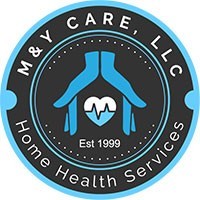As the coronavirus pandemic forced healthcare systems and providers to find new ways to deliver care, regulatory and reimbursement barriers lifted. Suddenly, telehealth became the darling of the healthcare delivery toolbox.
With new potential unleashed, a question looms about where the next form of disruption in virtual care will occur. Primary care seems poised as an ideal candidate.
As the ATA2020 Virtual Conference and Expo winds down its week-long event today, Northwell Health will present its novel model to home-based primary care (HBPC) that employs telehealth as one component of an initiative to provide medical care to frail individuals, helping them remain in their homes longer.
While hospitals, health systems, and provider groups explore other approaches to telehealth, the commercial sector, including MDLIVE, also has its eye on primary care. Along with creating more efficiencies, convenience, and hopefully lowering costs, these initiatives may help address a looming shortage in primary care physicians (PCPs), projected by the American Association of Medical Colleges to be between 21,000 and 55,200 by 2032.
Prior to COVID-19, urgent care had previously comprised the principal use case for telehealth visits with consumers. When the public health crisis hit, primary care providers (PCPs) and specialists began using this form of connecting with patients in record numbers. A FAIR Health measure of telehealth claims indicated a 4,347% increase in March from the privately insured sector alone.
Yet even before coronavirus crossed onto U.S. shores, MDLIVE, which offers virtual healthcare services to more than 40 million members nationwide, had already pegged primary care as a prime opportunity for growth. In January, the company announced a Virtual Primary Care Platform that Cigna is making available to 12.5 million of its members to conduct virtual annual wellness.
The platform is positioned to do much more, however, with an opportunity for consumers to use the service to develop an ongoing relationship with a virtual PCP. As the next step in this initiative, Cynthia Zelis, MD, MBA, joined the company this month as its chief medical officer. The board certified family physician previously helmed telehealth initiatives for University Hospitals in Cleveland, where she served as vice president of ambulatory operations and telehealth. She was the strategic and operational lead for 50+ ambulatory health centers and telehealth across the $4 billion dollar health system, which uses MDLIVE’s telehealth platform.
Her career trajectory may reflect a greater trend of what’s happening in the discipline of family medicine, as practitioners become more comfortable with embracing virtual care.
“I’m a daughter of a family physician, a wife of a family physician, and a family physician myself,” Zelis says. “I have always believed in the voice of the patient, as well as the voice of the provider, and that has motivated me to try to push and make an impact, even beyond the bricks and mortar of my original practice.”
Telehealth, she says, enables her to “provide that compassionate care that I’m able to give at the bedside and in [a] bricks and mortar [practice], but in an innovative and new way. I do believe virtual primary care is the next frontier to really make an impact.”
Zelis began her medical career in a traditional way, operating an independent practice. “The ability to impact the patient one-to-one in my practice was so empowering,” she continues. “Then I moved to a health system that took care of 1.3 million patients, and we had exponential growth of our virtual urgent care on-demand platform. It was powerful to see that impact. Now, as a physician executive with MDLIVE, [I have] the ability to impact 43+ million lives. That’s when real healthcare transformation can occur.”
While she no longer sees patients in person, “it is core to who I am to still be practicing,” says Zelis, To continue that line of work, she has become a credentialed MDLIVE primary care provider and plans to see patients virtually. “Continuing to practice ties me to my passion of taking care of patients and advancing health care,” she says, “and also [helps me support] my peers to understand how we can continue to make things better.”
Virtual care also offers an opportunity to improve patient care, she says, by enhancing the ability to be proactive. Coupling telehealth with remote patient monitoring will become a standard approach in the future, she predicts.
She provides an example to illustrate her point. “In my brick and mortar practice, a patient would come in for a blood pressure check with a long list of her blood pressures over the last three months,” But time was wasted, Zelis says, because eight weeks prior to the appointment the numbers had started to rise.
“Imagine that we’re monitoring [her] with virtual primary care … and I’m able to make an impact earlier, without the need for her to come to the office,” she says. The next step beyond that, she says, will be the ability “to use remote monitoring to predict future illness, as well as having a greater control on chronic illness, which we know is really one of the higher costs of healthcare.” The capability to deliver this type of care, Zelis says, is where the greatest opportunities lie to treat patients in the future.
“Virtual primary care is the next evolution of care,” says Zelis.
Although there is suddenly great momentum for telehealth, these changes will not happen overnight, she says. While many barriers have been lifted due to the pandemic, permanent changes to payment models and licensure are needed for this form of healthcare delivery to work long-term, she says.
To support these endeavors, Zelis is participating as one of nearly two dozen members on the Taskforce on Telehealth Policy. The taskforce has formed to help influence policy and develop long-term recommendations to maximize the benefits of telehealth services, while maintaining high standards for patient safety and program integrity, according to a news release.
The group, which holds its first meeting on June 29, is a joint initiative by the National Committee for Quality Assurance, the Alliance for Connected Care, and the American Telemedicine Association (ATA).
It includes representatives from a broad spectrum of plans, providers, consumer advocates, and health quality experts from the public, private and non-profit sectors. Zelis says the initiative is so important, that she will be serving alongside MDLIVE competitors Amwell, and Teledoc Health, as the industry comes together to find the best path forward.
“At the end of the day, we’re trying to continue to motivate and transform healthcare through telehealth,” Zelis says.
The task force is seeking input via a list of questions available online, and inviting members of the public to submit comments through July 8. At the close of the public comment period there will be a live town hall meeting to gain additional input.
“We urge all telehealth stakeholders to share their insights.” said ATA CEO Ann Mond Johnson in a news release.
By Mandy Roth | June 26, 2020
Source: Healthleaders Media

